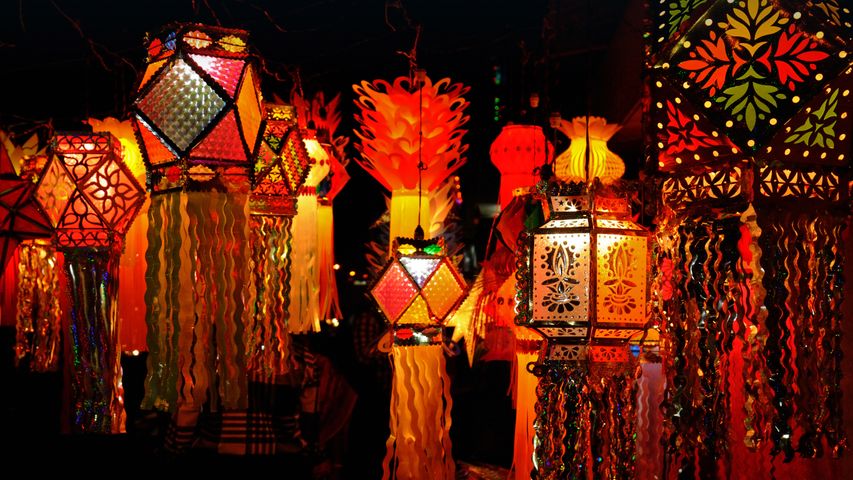Depiction of deities from the Tomb of Tutankhamun at the Egyptian Museum, Cairo, Egypt
© Stefan Lippmann/Universal Images Group via Getty Image
Tomb of the Golden Pharaoh
A hundred years ago today, British archaeologist and Egyptologist Howard Carter discovered the sarcophagus of Tutankhamun, better known as King Tut, in Egypt's Valley of Kings. Though they first uncovered the tomb of the 'boy king' on November 4, 1922, Carter and crew took years to excavate the burial site. What they found astonished the world. It was loaded with more than 5,389 artifacts, including a solid gold coffin, face mask, thrones, archery bows, trumpets, a lotus chalice, furniture, food, wine, sandals, gold caps to protect Tut's toes, and fresh linen underwear. Because you should always bring clean undies, even when you're crossing into Duat, the realm of the dead.
Though Tut is considered a minor pharaoh by historians, the discovery of his tomb was one of the most significant in the history of archaeology. The burial site was remarkably well preserved – unlike many neighboring tombs, it was untouched by grave robbers thanks to debris covering the entrance for most of the tomb’s existence. In the 1960s, Egypt allowed the treasures of King Tut to leave the country for display, and the exhibit has travelled the world numerous times. Today, King Tut's death mask and sarcophagus are displayed here at the Egyptian Museum in Cairo.
Related Images
Bing Today Images




 Statue of Rabindranath Tagore at Rabindra Sarobar, West Bengal
Statue of Rabindranath Tagore at Rabindra Sarobar, West Bengal
 Yungang Grottoes, Datong, Shanxi province, China
Yungang Grottoes, Datong, Shanxi province, China
 Dr. B.R. Ambedkar statue, Dharwad, Karnataka
Dr. B.R. Ambedkar statue, Dharwad, Karnataka
 Statue of Mahatma Gandhi at Parliament Square, Westminster, UK
Statue of Mahatma Gandhi at Parliament Square, Westminster, UK
 Stone carving at a temple in Ubud, Bali, Indonesia
Stone carving at a temple in Ubud, Bali, Indonesia
 The biggest Mahatma Gandhi statue in Pondicherry
The biggest Mahatma Gandhi statue in Pondicherry
 Bonaventure Cemetery, Savannah, Georgia
Bonaventure Cemetery, Savannah, Georgia
 Inside of a temple at sunrise in India Udaipur
Inside of a temple at sunrise in India Udaipur

